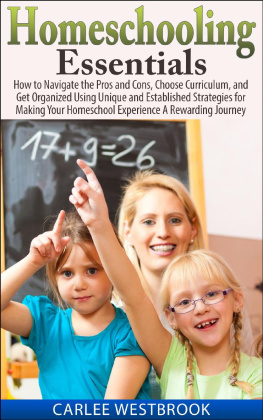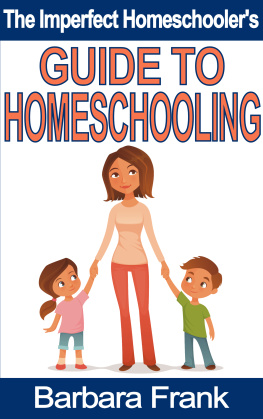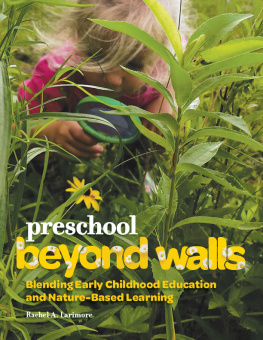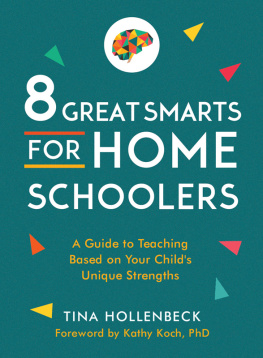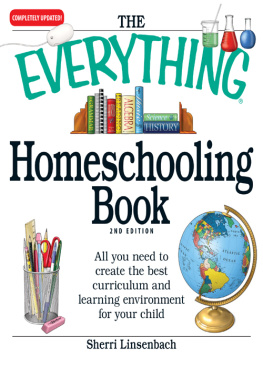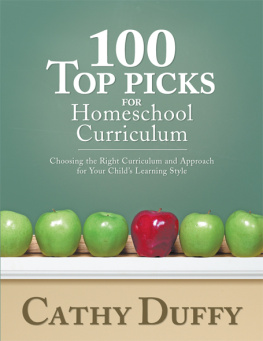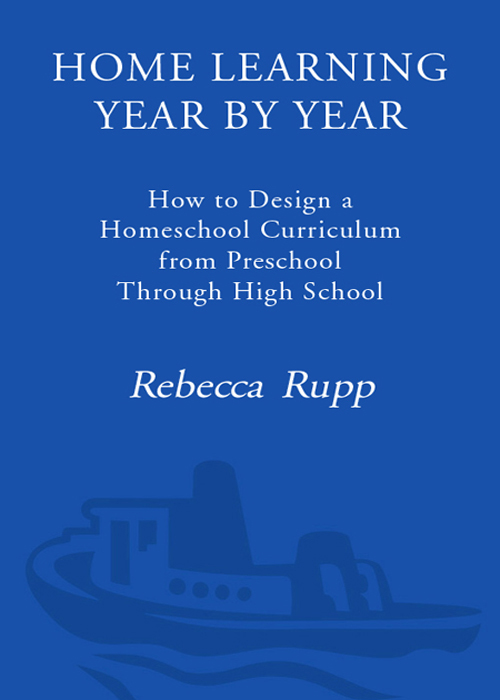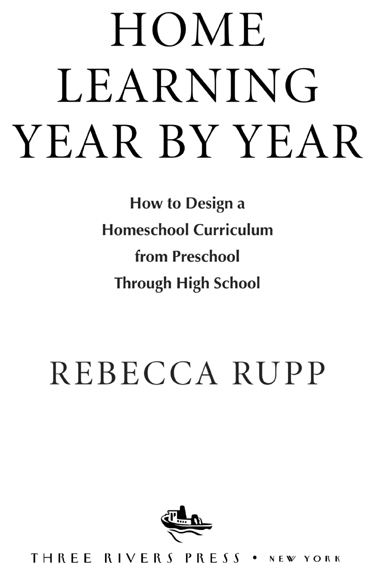Many thanks to all who helped in the making of this book. A special thanks to my editors at Three Rivers Press, Ayesha Pande, Lane Eastland, and Rachel Kahan, for their encouragement and nearinfinite patience, and to all the homeschooling friends and acquaintances who provided help and support. Most of all, as always, thanks to my sons, Joshua, Ethan, and Caleb, who are kindhearted and understanding about deadlines, and to my husband, Randy, who makes me feel brave, competent, and beautiful.
THE TRUTH ABOUT CURRICULA
Or, There Is No Such Thing
as a First-Grader
Don't panic.
D OUGLAS A DAMS
T HE H ITCHHIKER ' S G UIDE TO THE G ALAXY
Kids, as any parent knows, are determinedly individual. Interests, learning styles, attention spans, growth rates, developmental progress, and food preferences vary wildly from child to child. One learns to read at five, another at seven, a third at ten. One is a natural athlete; another falls flat while walking across a room. One is fascinated by rockets, a second by insects, a third by Greek mythology. One thinks math is cool; another loathes the very sight of a number. So where do standardized curricula fit in here? What course of study can possibly fit all?
The answer is a resounding none. There is no effective one-sizefits-all mode of education. The public school system, which has to cope with some fifty million school-age children annually, does the best it can to meet the needs of the many, targeting its content and goals at a hypothetical average child. On a large scale, it's unfeasible, inefficient, and downright impossible to create curricula tailored to meet the needs of fifty million idiosyncratic individuals. In large-scale education, therefore, kids have to adapt to the decreed norm.
One of the primary advantages of homeschooling is the ability to bypass the decreed norm. Homeschoolers can design their own curricula, assembling resources and using approaches that best suit their own children's needs. Your child is enthralled by marine biology? Invent a curriculum that builds upon this interest. Read books, fiction and nonfiction, about the oceans; play ocean-related games; collect seashells; conduct experiments on water pressure, temperature, and salinity; visit an aquarium; adopt a whale. Your child is fascinated by ancient Egypt? Read ancient Egyptian myths; build a model pyramid; experiment with hieroglyphics; locate Egypt on the map; visit a museum to view ancient Egyptian artifacts. Find out how to make a mummy; read a biography of archaeologist Howard Carter; learn about the Rosetta stone.
When it comes to curricula, kids should always come first. It's not what teachers teach that's important; it's what children learn and what children learn best is what interests them, what they want and need to know. This, in a nutshell, is the prime source of discord among teachers, children, and standardized curricula. The curriculum says Johnny should be studying long division; Johnny doesn't want to. Now what?
Homeschoolers, given this situation, have a wide range of options. No curriculum is written in stone. Perhaps an alternative math program will do the trickor math games and manipulatives rather than workbooks; a computer software program; or real-world math exercises involving cooking, carpentry, and other hands-on projects. Perhaps the best course is to drop math altogether for the time being and concentrate on something that sparks Johnny's interestsay, space travel, rock collecting, or raising tropical fishall of which, willy-nilly, eventually involve math. Our long experience in homeschooling has shown, time and again, that an intense interest in anything inevitably leads everywhere.
On the other hand, almost all homeschoolers, at some point or another, run into the puzzling question of sequence. Where do we start? How do we assure that our kids have an adequate grounding in the basics? What are the basics? What comes first? What should we tackle next? While public school curricula vary somewhat from state to state, all have similarities in that they attempt to present an appropriate developmental sequence of skills. Kids learn the letters of the alphabet first, then letter sounds, then the art of blending letter sounds into whole words. Addition and subtraction precede multiplication and division; studies of holidays and famous people prepare beginners for more structured studies of world and American history. Invented spelling precedes conventional spelling and grammar; basic algebra is a prerequisite for chemistry and physics.
Many states require that homeschoolers keep step with the public school curricula and demand proofin the form of written assessments or teststo ensure that they are indeed doing so. Colleges, though increasingly enthusiastic about accepting homeschooled students, often require a specific battery of high school background courses. For all of these reasons, it's to homeschoolers' advantage to be familiar with the general course of the standardized educational curriculum. The basic curriculum, however, should be used as a reference point and a guideline rather than a set of predetermined assignments. In many cases, there are equivalents and alternatives to the courses described here; and parents should adjust and adapt to best meet the needs of their own children.
Finally, no parent should view the standardized curriculum as cause for worry. Children vary, and homeschoolers inevitably will find that their more-or-less first-grader isn't quite standard. He or she may be reading at an advanced level but lagging in such essentials as arithmetic, time-telling, and the competent tying of shoes. Or, alternatively, he or she may have whizzed confidently ahead in math but be struggling with the awful process of grouping letters into words. As needed, move forward or back in the curriculum for lists of concepts and suggestions. The standardized curriculum can indicate academic areas in which kids need extra help and supportor creative substitutes and alternatives, or stress-reducing periods of being left alone. Variation, though, is normal, and our many individual differences are what make the world the interesting place it is. Kids are natural learners, and each will find his or her own best way to learn. There are many roads to an educational Rome.
STATE STANDARDS IN PUBLIC EDUCATION
Public-school standards categorized by state, subject, and grade level; Web site: www.putnamvalleyschools.org/Standards.html.
STATE STANDARDS
Click on a state to access information on standards and assessment methods, plus related lesson plans and resources; Web site: www.statestandards.com.
STATE EDUCATION DEPARTMENTS
Links to every state department of education; Web site: promise. cahs.colostate.edu/Project/DOE.html or www.harcourt.com/educators/education_depts.html.
THE BEST STATE STANDARDS
Which state has the best standards? This site explains the rating process and includes the texts of the very best. The winners: Massachusetts (English), Colorado (geography), California (math), Indiana (science), and Virginia (history); Web site: www.edexcellence.net.



